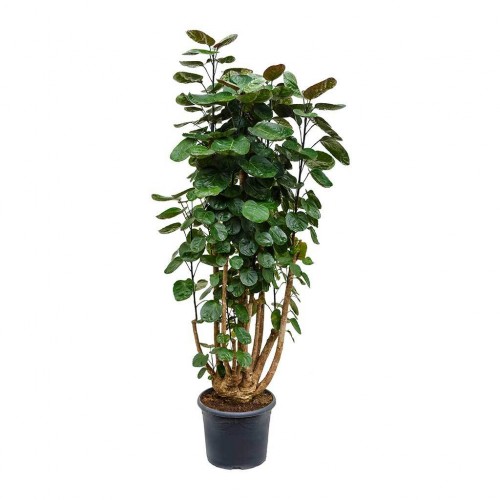Polyscias - Scutellaria (dinner plate aralia)
The Aralia Plant is evergreen and has traces of its origin and nativity distributed almost all over the world. These places include Africa, Asia, and Australia, parts of North and Central America and South America. The Belfour aaalia have a distinct kind of leaf that looks like leathery, round, dinner plates that are about 1-2 inches in diameter. This is why they are also known as the dinner plate aralia.
The variation of color in this plant ranges from light green to dark green with also some hints of a mixture of both green and cream. The aralia plant is not preferable houseplants as they are easily over-watered which results to root rot and the falling off of the leaves. They are further considered as poisonous and thus recommended to be put farther away from children and pets.
Care
· Balfour aralia plants have a preference to bright indirect light but they can still survive in low light areas should they not be over-watered.
· Allow half of the pot to dry before watering the plant as the fine roots makes over-watering easy. Also, in winter and when exposed to low light, water it with little water less often than normal.
· Use a plant food that is high in nitrogen levels and diluted half the recommended strength to fertilize aralia plants.
· The plant can work and sustain healthy leaves and flowers with the basic household temperature of between 65-80 degrees.
· Aralia plants require high humidity to grow better. Dry air caused by low humidity makes aralias drop their lives.
· These particular plants do not flower when used as houseplants, but through training, they can be perfect bonsai plants.
· Houseplant pests such as mealy bugs, scales, spider mites, and aphids will often attack aralia plants. This kind of infestations can be avoided by spraying the Aralia Plant regularly with a mixture of biodegradable soap and water regularly.
· Root rot which occurs as a result of over-watering is the main disease that affects aralia plants.
· Peat based well aerated light soil that can drain quickly in a way that doesn't allow too much accumulation of water in the is preferable when it comes to aralia plants planting.
· The planting should be done in small pots for easy and quick drying of the soil.
· The tips of the aralia plant should be pruned to ensure that it remains full.
· The propagation of the aralia plants is done through stem cutting. It can also be achieved through air layering should the stems be thick enough. The rate of success in the propagation of aralia is increased when temperatures are maintained above 70 degrees.
· The plant is poisonous with level 2 toxicity. It contains saponins that result in gastrointestinal irritation, nausea, vomiting, and diarrhea.
FAQs
How can I tell when I should re-pot my Belfour aralia plant?
The plant is often planted in small pots for easier drying of the soil. It should be replanted if the roots have filled the existing pot.
My aralia plant that is kept in the sunroom was doing great. Suddenly, it started to drop leaves in December. Can you explain the reason? Nothing has changed in its treatment.
Maybe it could because of the drop in temperatures. The plant is sensitive to cold temperatures. Should the temperatures drop below 60 degrees, the leaves will start to fall.
Contact the Toronto Plant Office for more information about this plant and how to place an order today.
Polyscias - Scutellaria
- Product Code: KZ508-32
- Availability: In Stock
-
$129.99







